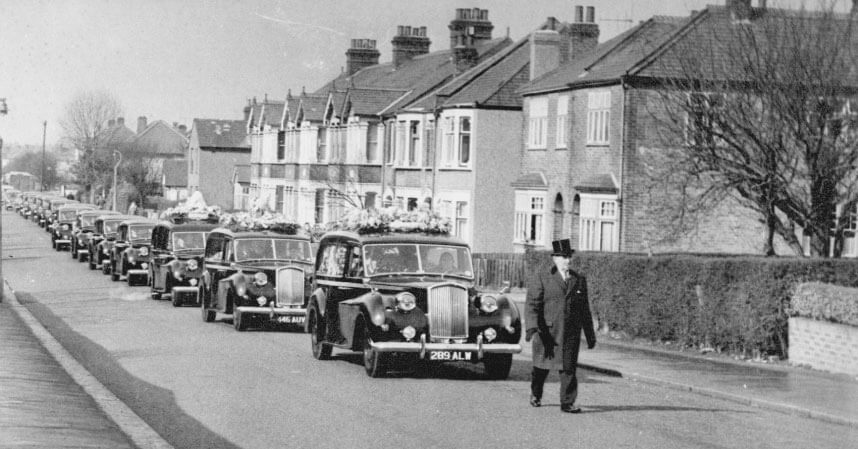Guide to the funeral cortege procession
Funeral procession etiquette and what you need to know about driving in a funeral cortege.
How to write an Inscription
Choosing or writing a memorial inscription is one of the most personal parts of remembering a loved one. A few carefully chosen words carved into stone can leave a timeless message of love, loss, and legacy. But what makes a good inscription? How do you find the right words?
Carrying the coffin
A pallbearer is traditionally one of the people who help to carry someone’s coffin from the hearse to the funeral venue. If they are being buried, this would include the grave. People chosen to do this, or who would like to, are usually close family members and friends.
Funeral hymns
People choose Funeral Hymns for a variety of reasons. Listen to and learn more about ten of the most popular Hymns that hold a special place in the hearts of many.
Bereavement support
Dealing with loss and bereavement can be a very difficult and confusing time for any individual or family and losing someone we love is probably one of the hardest experiences many of us will ever go through. Our local bereavement support groups, courses, and seminars will guide and support you through your healing process. You are not alone!
Alternative funeral Ideas
It’s often the little things that can make a loved one’s final goodbye or celebration more personal. Allow us to inspire you with some wonderful, unique, and alternative funeral ideas.
How to write a eulogy
Writing and delivering a eulogy is a deeply emotional experience. It can be a positive experience for some, it must be remembered that it can be too difficult for others.
Dressing the deceased
Many people wish for their loved one to wear familiar clothing when they are buried or cremated.
We can offer helpful advice on dressing the deceased.
The funeral reception
The funeral reception, or wake, held after the funeral service can be a traditional or unique affair. Personalised funerals become more popular. Therefore, people are choosing to use this time to celebrate the life of their loved one rather than mourn their passing.
Newspaper notices
The newspaper notice or obituary is an important opportunity to publicly announce the death and funeral details. It can also be used to detail where any donations or floral tributes and funeral flowers can be sent.
After the funeral
After the funeral, you are not alone. Bennetts Funeral Directors will continue to support you. We offer all our bereaved families practical information and a vast network of bereavement support services.

A funeral procession is also called a funeral cortege. It is a slow, solemn and respectful convoy of vehicles, which conveys the deceased and the mourners from the starting point to the site of the funeral ceremony and then (if appropriate) from the site of the funeral ceremony to the crematorium or graveside.
Who will arrange the funeral transport?
The person arranging the funeral, usually a member of the family or a close friend will arrange funeral transport and decide who will be in the cars or funeral limousines following the hearse. Many of the people going to the funeral will use their own cars and may choose to meet the procession where the service is being held.
Traditionally the funeral cortege procession will leave from the home of the deceased, however, it can leave from the home of a close relative, reception venue, care home, etc. The family, when arranging the funeral, may decide to leave from the address to where people will return after the funeral. Or, mourners may decide to meet at the place of service.